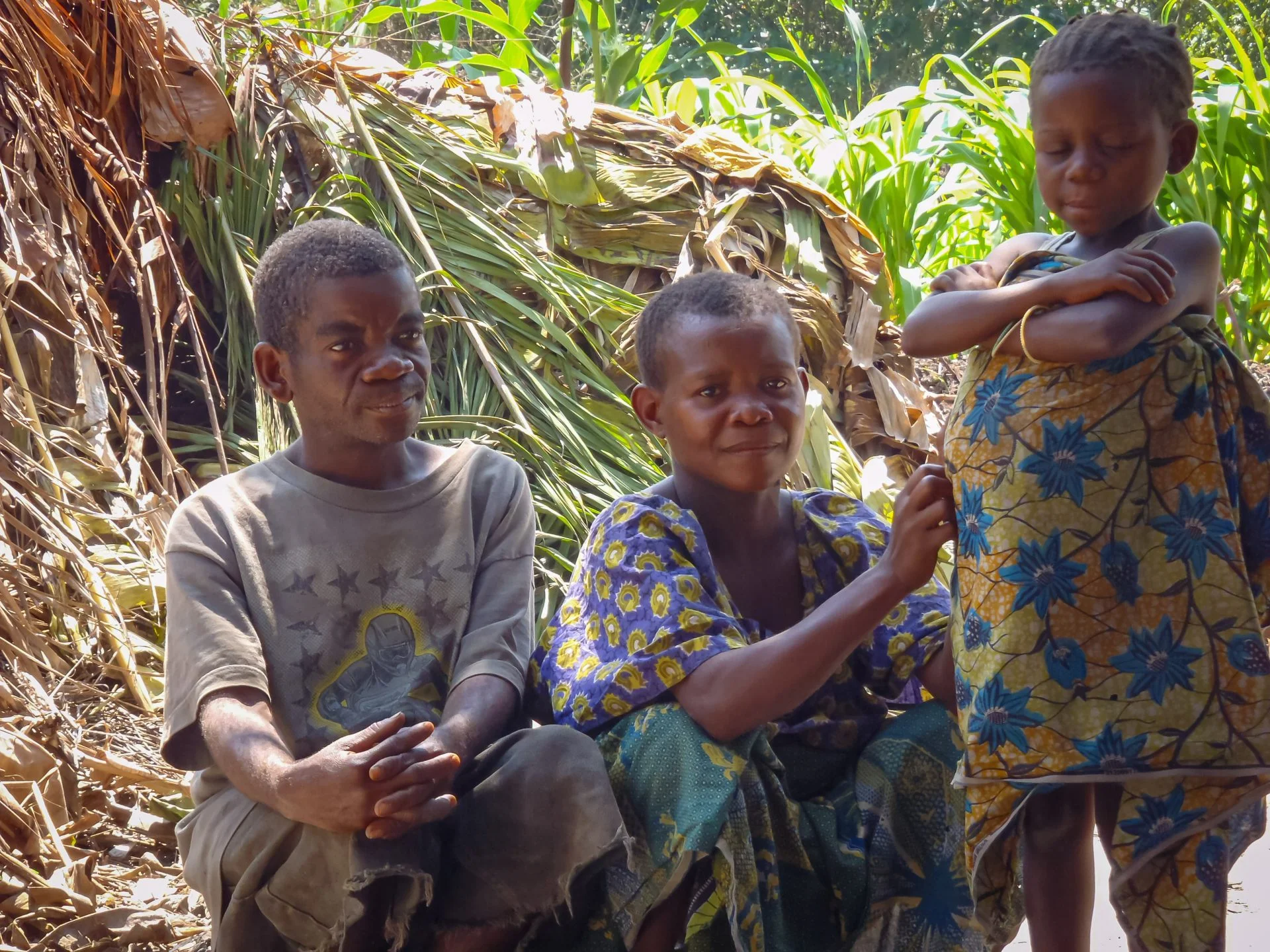The Mbuti Pygmies are nomadic hunters and gatherers that reside in the Ituri rain forest in north-eastern Congo.
They move to new settlements every 2-4 weeks, depleting the area of prey animals and plants before they move on, thereby maintaining a sustainable lifestyle. The 40,000 Mbuti members make up one of the oldest groups of indigenous people in the Congo.
Unfortunately, the Mbuti have no protection over their territory and struggle to maintain their traditions. Deforestation along with competing conservation efforts and civil and political unrest, continually threaten to harm the Mbuti’s way of life.
Like most societies, ceremony is involved with the transformation from child to adulthood. The traditional female initiation ceremony, called the Elima, celebrates a girl’s entrance into womanhood with the coming of her menstrual cycle. When a girl reaches her first cycle, it is a joyous event celebrated by the group, for the girl is allowed to marry and bear children.
The girl goes into seclusion in the ‘Elima house’ where an older relative teaches her the art of being a woman. Mbuti women and girls dance outside the house using traditional wooden sticks to perform the Amaanza, or period song and dance.
The village boys and young men wait for the girl to emerge (a period which can take several weeks), where she is often armed with a long whip for beating a boy she chooses to chase and catch. He responds by throwing rocks and sticks at her which is considered a sign of affection.
When a girl marries, it is expected that another woman will take her place in the group in a ‘sister exchange’. Women are an important part of the Mbuti economy and another woman must be ready to replace the bride who usually goes to live with her husband’s family group.
The groom is expected to present his future in-laws with a large game kill to prove his ability to take care of his family. The bride is sent off with her wedding party, painted in bright colours and palm oil, and wedding guests leave gifts of food, tools and small decorative pieces for the new couple. The wedding party travels from village to village hoping to receive gifts of food and palm wine.
Mbuti women are solely responsible for building the hut for her family at each location they settle every 2-4 weeks. They use sticks and twigs to form a domed frame and layer mongono leaves to create a waterproof dwelling.
The women repair the huts as needed, gather fruits, nuts and plants, and sometimes participate in the hunt, all while caring for their children. When the group is preparing to leave for another site, the women leave first to gather food for that night’s dinner.
Food is not always readily available and the Mbuti often rely on local village farms for additional sustenance, or sometimes work for the villagers in exchange for farm foods.
The Mbuti culture is under constant threat from outside factors such as deforestation and unrest, but they have proven to be one of the most resilient indigenous people in the Congo.
Written by Julie St Jean
Header Image Credit : Shutterstock





